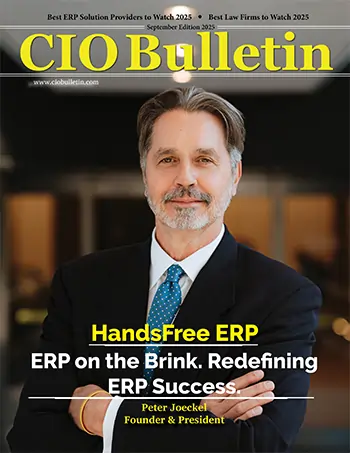CIO Bulletin

In today’s fast-paced business environment, identifying skills gaps and training needs is essential for organizations looking to stay ahead of the competition. With the help of HR analytics and HR dashboards, companies can leverage data to gain insights into their workforce and identify areas where employees need to develop new skills or knowledge. Working towards common goals, together, Employee Cycle is ready to change the way the world uses HR data. Your responsibilities as an HR professional are to drive hiring, create culture, and cultivate productivity and so much more. Employee Cycle’s team understands your goals and works together to make sure that you have the best HR data experience possible.
Before companies can start optimizing their training programs, they need to identify skills gaps within their workforce. This can be done by analyzing data from performance reviews, employee surveys, and job requirements. HR dashboards can provide an at-a-glance view of where skill gaps exist across the organization, making it easier for HR teams to prioritize training initiatives. For example, an HR dashboard may reveal that a particular department is struggling with project management skills. This information can be used to develop targeted training programs that address this specific skill gap. By using data to identify skills gaps, companies can tailor their training initiatives to the needs of their employees, resulting in a more engaged and productive workforce.
“Engage with your organization like never before with an HR dashboard that helps you see real metrics in real-time that really matter.”
Optimizing Training Programs
Once skills gaps have been identified, companies can use HR analytics to optimize their training programs. Many companies are adopting advanced HR management system software to support this, offering features like interactive performance reviews, employee progress tracking, and comprehensive analytics to optimize training strategies. These tools include interactive reviews and 360-degree feedback mechanisms, which are essential for identifying specific training needs. This approach is especially useful for small businesses using UK HR software for small companies, which enables managers and employees to collaboratively create fair and constructive performance reviews. Additionally, the tools provide 360-degree feedback, giving a complete view of employee performance from colleagues and peers. These features simplify the review process and give a clearer picture of what skills need development. By using these tools, small companies can better tailor their training efforts and increase productivity.
Improving Organizational Performance
By using data to identify skills gaps and optimize training programs, companies can improve their overall organizational performance. Employees who receive targeted training are more engaged and productive, which can lead to increased profits and a stronger competitive advantage. In addition, HR analytics can help companies identify trends and patterns that may impact business performance, such as turnover rates or employee satisfaction levels. HR dashboards are a valuable tool for tracking and analyzing this information, providing an at-a-glance view of key performance indicators (KPIs) that HR teams can use to make data-driven decisions. By using data to drive their HR initiatives, companies can stay ahead of the curve and achieve long-term success. In conclusion, using data to identify skills gaps and training needs is essential for optimizing training programs and improving organizational performance. With the help of HR analytics and HR dashboards, companies can gain valuable insights into their workforce and develop targeted training initiatives that address specific skill gaps. By leveraging data to drive their HR initiatives, companies can stay ahead of the competition and achieve long-term success.
Employee Cycle is a powerful HR dashboard and analytics tool that equips companies with powerful insights to better identify skills gaps and optimize training programs. Employee Cycle’s platform provides a comprehensive view of key HR metrics, including turnover rates, diversity, and engagement indicators. With Employee Cycle, HR teams have the visibility and understanding to inform and optimize programs to improve engagement, productivity, and performance.
HR Analytics Roles
HR Analytics (also known as People Analytics) is the use of data, statistical analysis, and technology to inform and improve HR practices. It involves collecting and analyzing data on various aspects of the workforce. These areas include talent acquisition, talent management, employee engagement, and performance management, to gain insights and make data-driven decisions. With Employee Cycle’s HR Analytics Dashboard, we make the job easier. We collect all the workforce data from your disparate systems and bring it into an easy-to-read and visualize dashboard.
There are three main goals of HR analytics:
HR analytics covers a wide range of activities. From data collection and analysis to the development of dashboards, reports, and other visualizations. It requires skills in data analysis, HR practices, and technology, and often involves collaboration between HR, IT, and other stakeholders. As data-driven decision-making becomes increasingly important in organizations, HR analytics is becoming an increasingly critical function within HR. We see a growing number of organizations are investing in the development of their HR analytics capabilities. Now, let’s look at the various roles that involve HR analytics.
Putting All the Pieces Together
Here at Employee Cycle, the team has a simple mission: To make HR smarter and more data-driven. And Employee Cycle’s HR Analytics Dashboard can help HR professionals with analytics roles do their jobs better in several ways:
Bruce Marable, CEO

Insurance and capital markets







